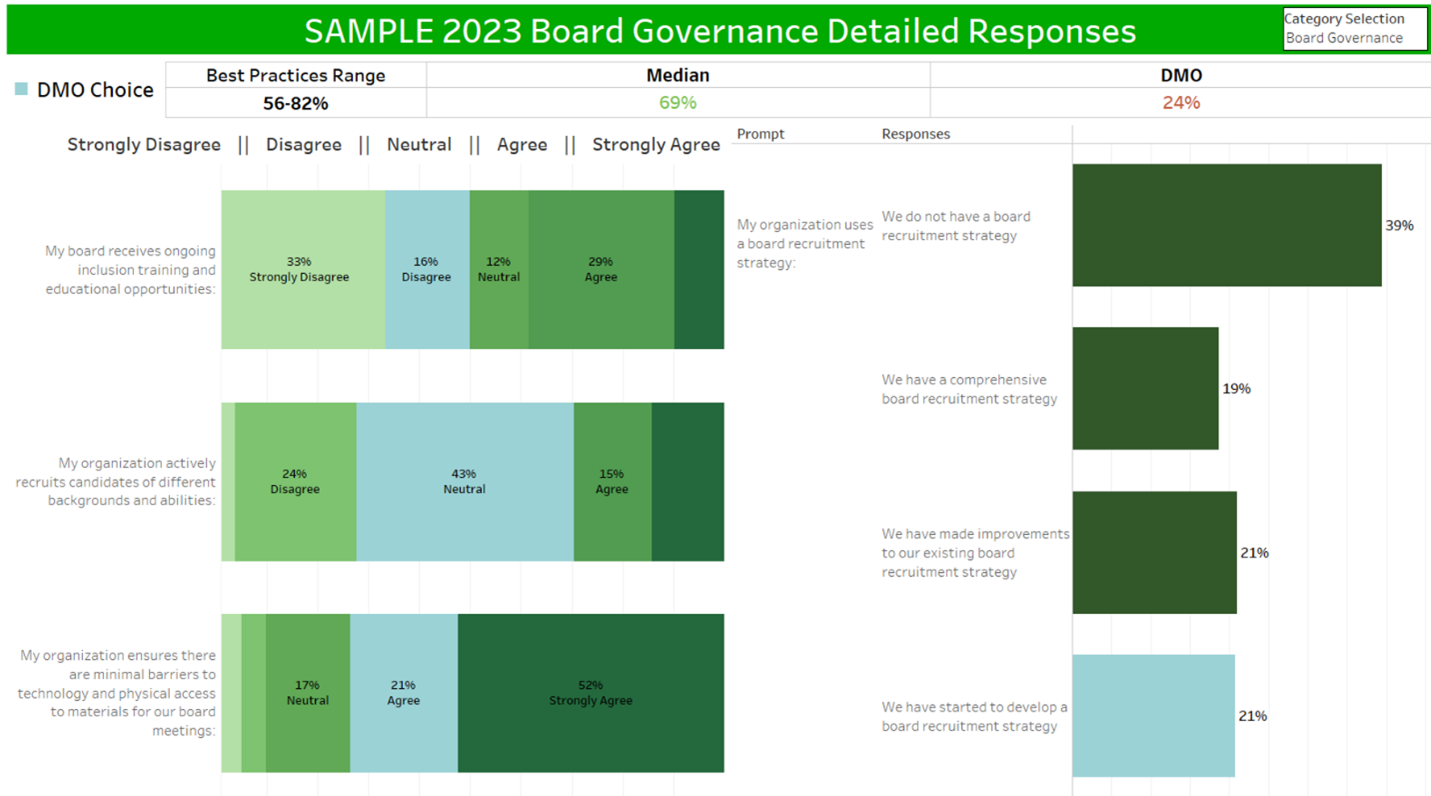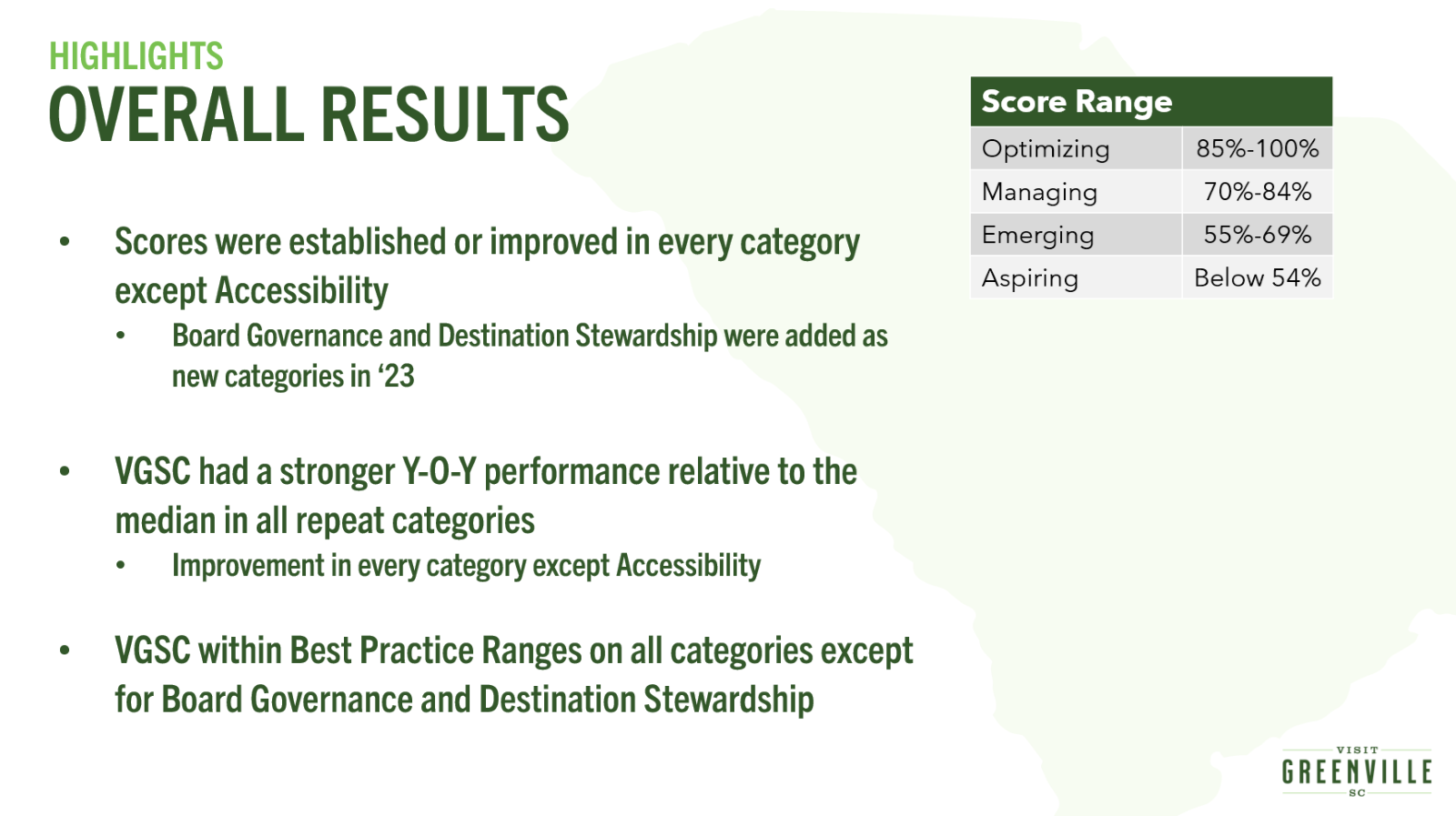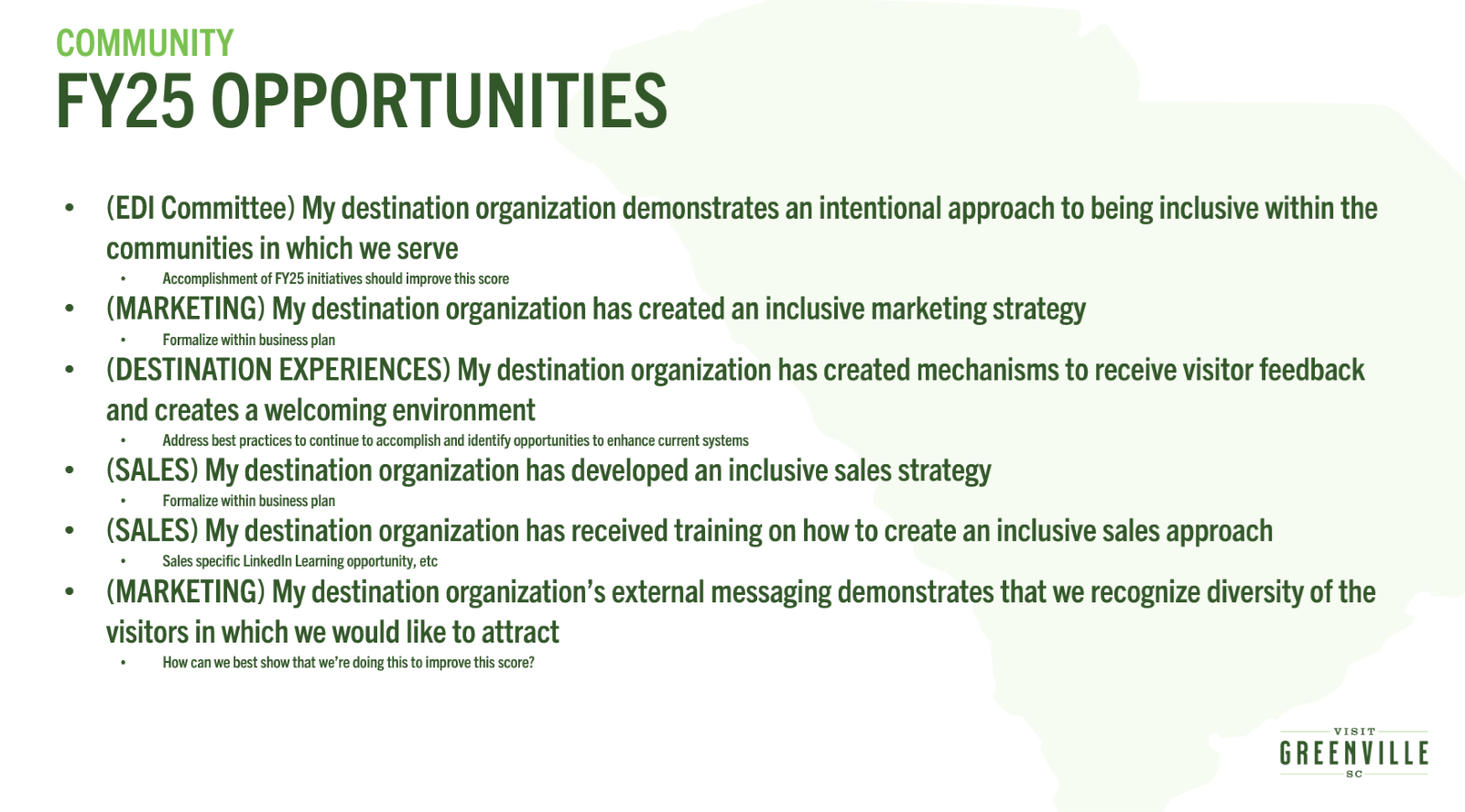
VisitGreenvilleSC’s strategic use of the Social Impact Assessment Tool highlights the power of data-driven insights to drive meaningful progress in social impact offering a model for other destinations to follow.
Imagine a destination where everyone—regardless of their background or ability—feels a genuine sense of belonging. Social impact is the key to creating vibrant, thriving communities that attract visitors and benefit residents. For destination organizations, embracing impact is both a responsibility and a strategic move that sparks community vitality and fuels economic growth.
To drive impact, destinations can reflect on their communities and their organization’s vision. They can identify initiatives and strategies where impact naturally fits. They can leverage data to measure maturity, reflect on areas of growth, and commit to incremental change.
It all begins with data
VisitGreenvilleSC (VGSC) uses Destinations International (DI)’s Social Impact Assessment Tool to build its data foundation for impact. Now in its second year with the assessment, VGSC measures its impact maturity, develops an action strategy based on results, and communicates its goals to ensure buy-in and accountability. VGSC’s robust approach is a best practice for destinations on their impact journeys.
Collaborate internally to develop an informed picture of impact
Michelle Guevara, Director of Destination Experiences, oversees VGSC’s impact efforts. In January, Michelle and the committee decided on all responses needed for the Social Impact Assessment. This collective process allowed for well-rounded responses that reflected the full organization rather than an individual point of view.
In January, Michelle and the committee decided on all responses needed for the Social Impact Assessment. This collective process allowed for well-rounded responses that reflected the full organization rather than an individual point of view.
After completing the Assessment, Michelle knew that in-depth data would be critical for their analysis and strategic planning. She selected the Tool’s “Standard” package, which provided VSGC with an extended scorecard, including individual scores for each question, median results, and best practice ranges.
The Assessment results were shared with Jonathan Smith, VGSC’s Director of Research, who then developed dashboards using Tableau. This visualization made the data accessible and actionable, allowing VGSC to report findings more easily to both internal and external stakeholders.

Expert Tip: Data visualization tools can transform raw data into actionable insights, making it easier to report and strategize.
Turn data into insights
The dashboards compared VGSC’s performance across different categories for 2022 and 2023, showcasing best practice ranges and median scores. This comparison highlighted areas where VGSC was performing well and where there were opportunities for improvement. VGSC was thrilled to find they achieved their goal from the previous year, moving from ‘aspiring' stage of maturity to the ‘emerging’ stage for community engagement.
The question-by-question analysis allowed for a full analysis of the results, identification of areas where VGSC can improve in the short-term, long-term, and areas where they want to maintain their scores. Michelle then identified which people or departments would be responsible for owning a piece of the strategy and the implementing tactics needed to help move the needle.

Expert Tip: Break down broad impact objectives into specific, measurable goals that align with existing workstreams. Instead of launching new initiatives, focus on embedding impact into current processes. Consider where other departments can engage to share ownership, ultimately placing impact as a value across the organization.
Build a compelling story and message
Michelle used insights from the dashboards to create a PowerPoint overview of findings. Detailed results and recommendations were shared internally with VGSC’s leadership team and social impact committee, while a high-level overview was shared with full staff and the Board of Directors.
VSGC’s strategy involves integrating social impact objectives into its annual business plan to ensure these goals are formalized and actionable. This structured approach will help them continue advancing in areas like community engagement while addressing new priorities. Goals were finalized at the end of August with a scheduled quarterly review to determine progress and assess roadblocks.


Expert Tip: Embed social impact objectives into your annual business plan with clear action steps, timelines, and measurable outcomes. This formalization ensures accountability, allows for regular progress tracking, and keeps impact efforts aligned with broader organizational goals.
Inspiration for others
VGSC's experience with the Social Impact Assessment Tool demonstrates the importance of data-driven decision-making in enhancing social impact.
By leveraging detailed data insights, setting clear goals, and thoughtfully navigating external communication, destination organizations can create more inclusive and welcoming environments for everyone.
Ready to begin your journey toward greater impact? Click here to learn more about the Social Impact Assessment Tool and discover how you can transform your destination into a place where everyone feels they belong.
Submit Your Thought Leadership

Share your thought leadership with the Destinations International team! Learn how to submit a case study, blog or other piece of content to DI.


